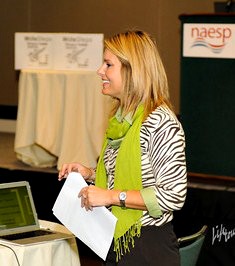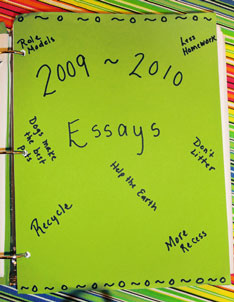 Binder of 3rd grade writing samples collected by Denise Dusseau for next year’s class. Once teachers have a strong foundation in the WriteSteps lessons, collecting class samples can be a great way to honor student work and help your evaluations.
Binder of 3rd grade writing samples collected by Denise Dusseau for next year’s class. Once teachers have a strong foundation in the WriteSteps lessons, collecting class samples can be a great way to honor student work and help your evaluations. Today I’m pleased to welcome back our 3rd grade curriculum creator and incredible teacher, Denise Dusseau. Here’s Denise, on using anonymous student writing samples with K-5 writers:
Denise: WriteSteps provides dozens of excellent anonymous samples for each grade, but I started creating my own collections when I was still using the Lucy Calkins program. Whether or not you already have plenty of anonymous student sample writing to use in your lessons, using samples from your own students can be powerful. Why?
• they honor your students’ work
• they reflect the unique culture of your school
• they can help your evaluations
Inspiring Confidence
I mentioned in our December Inspired Writer eNewsletter that when I started using WriteSteps, I saw a wonderful difference in the writing of my students who have learning disabilities or ADD. They used to have a hard time getting anything on the page, but now they’re motivated, they’re staying engaged, and they’re making real strides. Continue reading “3 Great Reasons to Collect Your Own Student Writing Samples”





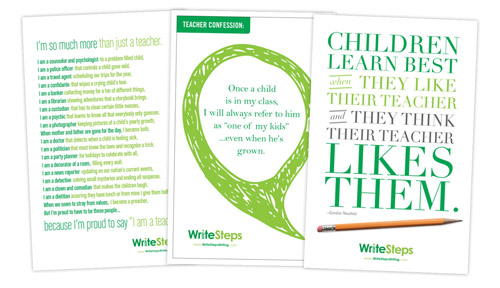 Happy Teacher Appreciation Week! I’d like to take a moment to tell you how much I appreciate the work you do. As a former teacher, I understand the sacrifices you make. I also know the positive impact you make on your students’ lives daily.
Happy Teacher Appreciation Week! I’d like to take a moment to tell you how much I appreciate the work you do. As a former teacher, I understand the sacrifices you make. I also know the positive impact you make on your students’ lives daily. Take a look at the world around you today and compare it to twenty years ago. What do you notice? I notice how technology has changed so many aspects of our lives. Now, compare when you were first learning to write to present day students learning to write. How has technology affected student writing? Below I’ve outlined the pros and cons related to technology and the effect it has on student writing.
Take a look at the world around you today and compare it to twenty years ago. What do you notice? I notice how technology has changed so many aspects of our lives. Now, compare when you were first learning to write to present day students learning to write. How has technology affected student writing? Below I’ve outlined the pros and cons related to technology and the effect it has on student writing.  This entry was originally published in
This entry was originally published in  No matter where you live in the world, writing is an important skill to master. We were contacted by Open Colleges, an education company based in Sydney, Australia, who asked us to share a blog from their Community Manager, Tess Pajaron. We were happy to do so. It shows two countries think alike when it comes to writing! Read on to learn Tess Pajaron’s tips for encouraging students to write more.
No matter where you live in the world, writing is an important skill to master. We were contacted by Open Colleges, an education company based in Sydney, Australia, who asked us to share a blog from their Community Manager, Tess Pajaron. We were happy to do so. It shows two countries think alike when it comes to writing! Read on to learn Tess Pajaron’s tips for encouraging students to write more.  I was planning on posting a formative assessment piece but I saw this wonderful blog and couldn’t help but share it just in time for Valentine’s Day. Thanks Cindi! (Photo by THOR, via Flickr Creative Commons)
I was planning on posting a formative assessment piece but I saw this wonderful blog and couldn’t help but share it just in time for Valentine’s Day. Thanks Cindi! (Photo by THOR, via Flickr Creative Commons)

 ny students seem to struggle with on-demand writing during test taking.
ny students seem to struggle with on-demand writing during test taking.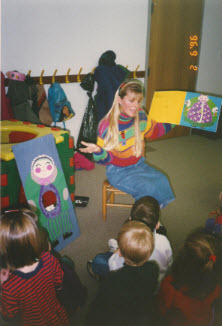
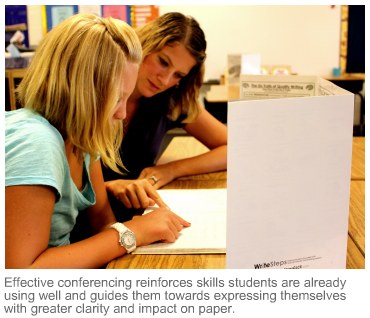
 By Lily Jones (Guest Blogger)
By Lily Jones (Guest Blogger)




